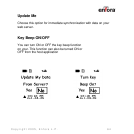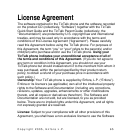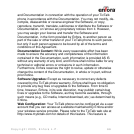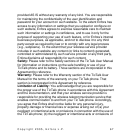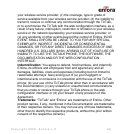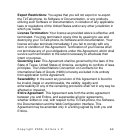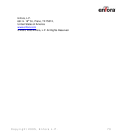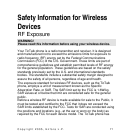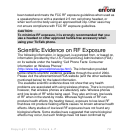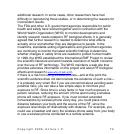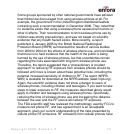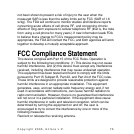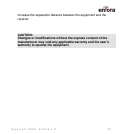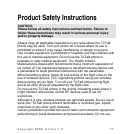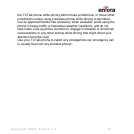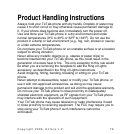
been tested and meets the FCC RF exposure guidelines when used as
a speakerphone or with a standard 2.5 mm cell phone headset, or
when worn on the body using an approved belt clip. Other uses may
not ensure compliance with FCC RF exposure guidelines.
CAUTION:
To minimize RF exposure, it is strongly recommended that you
use a headset or other approved hands-free accessory when
using your TicTalk phone.
Scientific Evidence on RF Exposure
The following information, in large part, is excerpted from, or based on,
information provided by the U.S. Food and Drug Administration (FDA)
on its website under the heading “Cell Phone Facts: Consumer
Information on Wireless Phones”
(
http://www.fda.gov/cellphones/qa.html). The information provided
below reflects scientific evidence available through the end of 2004.
Please visit the aforementioned FDA website (and the other websites
mentioned below) for the latest information.
The available scientific evidence does not show that any health
problems are associated with using wireless phones. There is no proof,
however, that wireless phones are absolutely safe. Wireless phones
emit low levels of RF while being used. They also emit very low levels
of RF when in the stand-by mode. Whereas high levels of RF can
produce health effects (by heating tissue), exposure to low-level RF
that does not produce heating effects causes no known adverse health
effects. Many studies of low-level RF exposures have not found any
biological effects. Some studies have suggested that some biological
effects may occur, but such findings have not been confirmed by
Copyright 2005, Enfora L.P. 72



